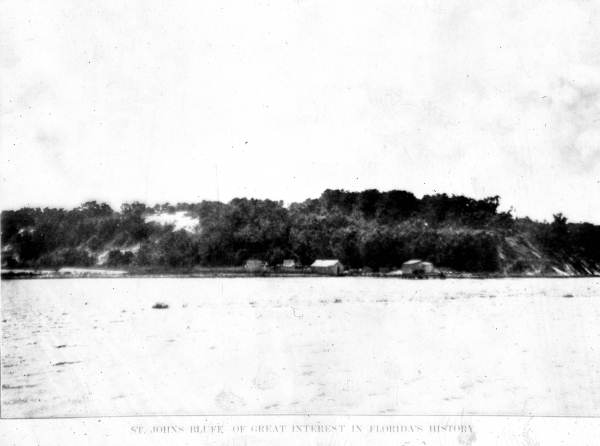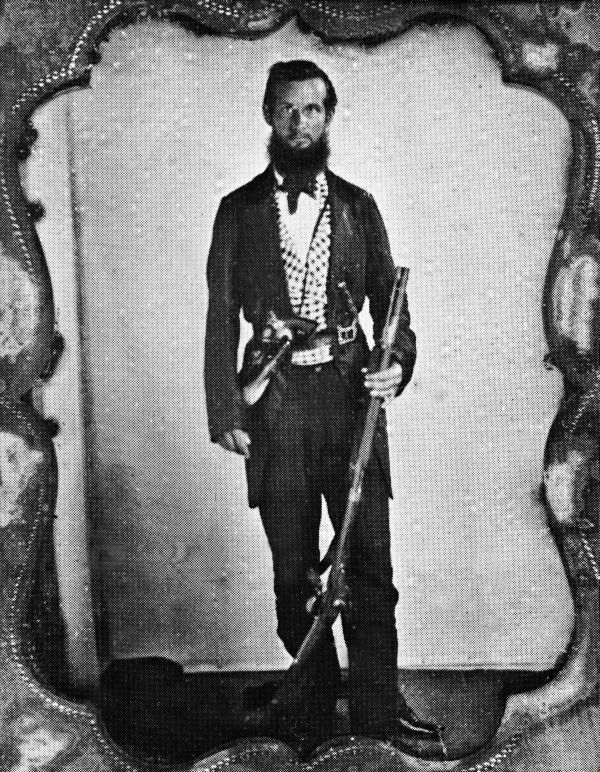Description of previous item
Description of next item
The Confederate Retreat at Saint Johns Bluff
Published October 10, 2012 by Florida Memory
Florida faced three avenues of invasion during the Civil War: the Apalachicola River, the St. Marks River, and the St. Johns River. Although the state obviously comprised much more land than the territory along those three waterways, geographic, economic, and political factors made the rest of the state, with the exception of the naval bases at Key West and Pensacola, largely irrelevant to Union strategy. The vast majority of Florida's population (slave and free), agricultural production, and political power resided in North Florida, which was the only section of the state contiguous to the Confederacy. Of the three strategic rivers, only the St. Johns River played a central role in the Union's campaign in the state: Federal forces never tried to drive up the Apalachicola, and when they finally marched up the St. Marks in March 1865, in a campaign that ended in a Confederate victory at Natural Bridge, the war was nearly over.
The St. Johns was vital to the Union's Florida strategy. If the Federals controlled the river, they could raid at will into the Confederate interior and use the river as a protective barrier for control of the land to the east. Behind this barrier, they could potentially begin the political reconstruction of Florida by securing and organizing the large number of Unionists in the area. A secure Northeast Florida would also serve as a magnet for escaped slaves, many of whom would eventually enlist in the Union army.
Preventing these possibilities made control of the St. Johns equally important for its Confederate defenders. One key to preventing a Union march up the River—the St. Johns is one of the few rivers in North America that flows north—was control of St. John's Bluff. The bluff was located on the approach to Jacksonville, six miles from the mouth of the St. Johns, and was the highest point along the river. Artillery on the bluff would make it extremely difficult for ships to pass upstream. However, with Confederate defenses in disarray following the Union's first occupation of Jacksonville in March 1862, Union gunboats stationed at Mayport operated up and down the St. Johns. The gunboats were magnets for escaped slaves, who flocked to the river in search of the vessels and passage to freedom. Slave owners along the St. Johns demanded the Confederate government take immediate action to stop the exodus.
Brigadier General Joseph Finegan, the Confederate commander in east Florida, was determined to fortify St. Johns Bluff and end the Union raids. He had few resources at his disposal, however. When he assumed command in April 1862, most Confederate forces were removed from Florida to meet the crisis brought on by Federal victories in Tennessee. With only a handful of troops, Finegan set out to strengthen his forces with local volunteers and launched a wide-ranging campaign to find arms, especially artillery, for his units. By September 1862 he had found enough artillery to fortify St. Johns Bluff, where Confederate troops used slave labor to construct their defenses.
The Confederates opened fire on the first Union gunboat to approach the fortified bluff on September 11. Taken by surprise, the U.S.S. Uncas, soon joined by the U.S.S. Patroon, bombarded the Rebels but failed to destroy the position. On September 17, three more Union gunboats arrived to reinforce the two vessels and launch a renewed bombardment. It soon became apparent that naval force alone would not drive the Confederates off the bluff. The Union dispatched over 800 troops to Florida from its units along the South Carolina coast. These troops arrived at Mayport on October 1. The next day, the Union troops landed and began a march around towards the rear of the Confederate position.
Meanwhile, the Confederate commander on the bluff, Colonel Charles F. Hopkins, was in a panic. He believed that 5,000, not 800, Yankees were preparing to assault his defenses. Faced with continued bombardment from the Union gunboats and the prospect of an overwhelming Union force attacking from the rear, Hopkins decided he must abandon the position. Disgusted with the prospect of retreat before he had even encountered the enemy, Captain Winston Stephens, one of the Confederate officers at the bluff, believed the position was strong enough to withstand any Yankee assault and reckoned his men "could kill four to one in these woods." Colonel Hopkins was not so optimistic. He ordered his men to retreat from the bluff on the night of October 2-3. The Federals then occupied the position and captured all the Rebel cannon in the process—Hopkins had failed to ensure that the guns were spiked or blown up.
The Confederate retreat from St. Johns Bluff was a humiliating defeat. The Federals reoccupied Jacksonville on October 3, and their gunboats once again steamed unmolested up the river. General Finegan called Hopkins' retreat a "gross military blunder" but Hopkins, who demanded a court-martial to defend his actions, argued that the position was indefensible due to the lack of men and material available to his command. The court-martial exonerated Hopkins, who, although excoriated in the Confederate press, was less to blame for Florida's weakness than the Confederate government, which had removed the men and material necessary for the state's defense.
The Stephens quote is found in Daniel L. Schafer's Thunder on the River: The Civil War in Northeast Florida, University Press of Florida (2005). Most of Stephens' extensive wartime correspondence with his wife, Octavia, is published in Rose Cottage Chronicles: Civil War Letters of the Bryant-Stephens Families of North Florida (University Press of Florida, 1998).
Cite This Article
Chicago Manual of Style
(17th Edition)Florida Memory. "The Confederate Retreat at Saint Johns Bluff." Floridiana, 2012. https://www.floridamemory.com/items/show/255858.
MLA
(9th Edition)Florida Memory. "The Confederate Retreat at Saint Johns Bluff." Floridiana, 2012, https://www.floridamemory.com/items/show/255858. Accessed March 25, 2025.
APA
(7th Edition)Florida Memory. (2012, October 10). The Confederate Retreat at Saint Johns Bluff. Floridiana. Retrieved from https://www.floridamemory.com/items/show/255858

 Listen: The Blues Program
Listen: The Blues Program

